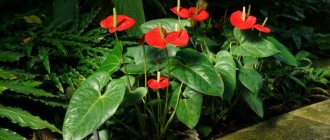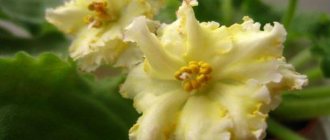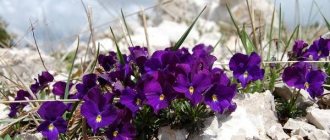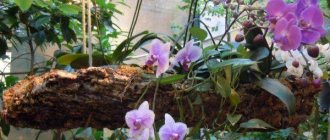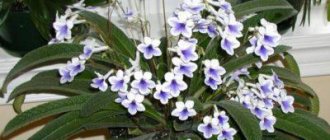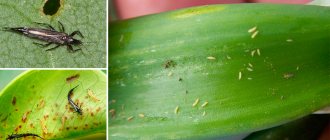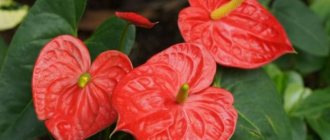A little history
It is difficult to find a person who has not heard anything about growing indoor violets.
However, in the botanical world, professionals know them under a completely different “name” - Saintpaulia. This is the name that is reflected in all specialized literature and highly specialized publications, plant classifiers. But for simplicity, we will use the name generally accepted among gardeners. The description of violets requires mentioning from the very beginning that breeders have created many varieties of this ornamental crop. It can be annual or perennial, but always has a short stem. It holds rosettes of foliage resembling a circle, oval or heart. The varieties differ precisely in the size of the rosette. Violet roots are always thin and spread over a large area. This plant blooms for 9 months.
The wild ancestors of violets live in Africa
They were first noticed by the commandant of the German colonial possessions, Walter Saint-Paul (in whose honor the botanical name was given). True Saintpaulia grows only in the Usambara Mountains in Tanzania.
Some subspecies have been found on Kenyan territory. Plants are concentrated near waterfalls and in river terraces.
There is often information that Saintpaulia can be found in Japan, South and North America, southern Africa and even in New Zealand. We will leave the truth of these judgments to the conscience of their authors, especially since reputable encyclopedic publications are unanimous: the Uzambara violet grows only in certain areas of eastern Africa. Now let's get back to how it came into circulation.
The commandant mentioned above was not a botanist or naturalist - he was just taking a walk and accidentally noticed flowers growing in a mountain crevice. Having picked this plant, he sent it to his relative, who was collecting a herbarium of rare and exotic species
After some time, in 1893, experts included the find in the Gesnerian family and at the same time it was demonstrated to the general public for the first time.
Types and varieties of violets
Tips from experienced gardeners on how to plant violets
Those violets that regularly grow in parks and gardens are called African violets (Saintpaulia Ionatha). However, these plants are not actually a variety of classic violets, although they share the same flower shape.
What types of violets should I pay special attention to?
African violets owe their popularity to their wide range of colors. In the plant world, there are white, blue, pink, green, purple, etc. In addition, the petals may have white spots or edges. They can also be two-tone or multi-colored.
With border:
- Iceberg. It has quite remarkable star-shaped double inflorescences;
- Through the Looking Glass. Semi-double inflorescences of this variety have a border;
- Rose of Wind. The inflorescences of this violet are a bit like ordinary garden roses;
- Natalis Estravagante. Lace inflorescences with a multi-colored border;
- Beautiful Creole. The flowers of this variety are star-shaped;
- Modern Talking. The corollas of this violet are white, and the border is usually purple or blue;
- violet-flowered. The flower has heart-shaped rosettes, short stems and a large rosette.
Beautiful violets with a border
Burgundy:
- Goddess of beauty. The leaves are large and dark. Double flowers;
- The magic of love. This variety has double flowers;
- Black Prince. The flowers are double and resemble a star.
White:
- Alice Blizzard Baths. Alabaster flowers resemble stars and are quite modest in size. The petals are semi-double, the rosettes are bright and heart-shaped;
- Snow lace. Double flowers with a border and a blue spot in the middle;
- The bride's bouquet. Large milky flowers are star-shaped;
- The Snow Queen. Semi-double flowers of medium size, round rosettes.
Blue varieties of violets:
- Blue dragon. Large inflorescences have a light green border;
- Blue Danube. The inflorescences of this Saintpaulia reach 5 cm in diameter. There are small teeth at the ends of the leaves;
- Blue Lagoon. The inflorescences have a full border and a blue spot in the center.
Pink:
- Georgia. Large double inflorescences have a rich color and a thin border of light green;
- Marquise. This variety has a rich pink hue and a blue border;
- Magdalene. The inflorescences are large, double, and resemble a ball. The edging is wavy;
- another name for an unusual pink violet with a green border is Winter Smiling.
Purple:
- Currant dessert. The petals have a fringe of an unusual color. The leaves of this unpretentious plant are velvety;
- Winter rose. The shape of the inflorescences is very similar to rose flowers and has a white edge. The leaves are small and rich in color;
- Baltika. The variety is classified as semi-double and has a wide edge. Leaves with toothed tips;
- Rosemary. The inflorescences are double, star-shaped with bright white streaks. The leaves have serrated edges.
Lilac:
- Chanson. The flowers look like bells. The plant blooms for a long time;
- Zemfira. Flowers are single or semi-double. The leaves are colorful;
- Satellite. The rosette is small, and the flowers are brightly colored.
Note! Breeders have long tried to develop a variety with yellow flowers. In nature, Saintpaulias do not have a gene that would be responsible for this color. Only at the end of the 20th century
one breeder managed to get a yellow variety. No one knows his name
Only at the end of the 20th century. one breeder managed to get a yellow variety. No one knows his name.
Reviews about violet
Lilia, Pyatigorsk. “I had this violet standing under the lamps, and the leaves were actively curling. I placed the pot with the plant on the floor, in the farthest corner, so that she could straighten the leaves a little in the dark. I didn’t think it would bloom, but it turned out to be a very compact and neat bouquet of green flowers. But the socket still didn’t fix itself – it was still disheveled.”
The variety attracts the attention of many gardeners.
Alisa, Tomsk. “The more green the petals are, the longer the bloom lasts. The variety is a constantly flowering variety.”
Maria, Novosibirsk. “The variety is excellent, the head of flowers lasts for at least 4 months. Divorces very well. Roots appear on the cuttings in almost a week. Produces a large number of children. If sports appear, they are beautiful, sustainable, and pass on their characteristics to the next generations.”
Types and varieties of violets
Nordmann fir: description of varieties and growing tips
Sedum varieties and types - the best varieties for the garden
Those violets that regularly grow in parks and gardens are called African violets (Saintpaulia Ionatha). However, these plants are not actually a variety of classic violets, although they share the same flower shape.
What types of violets should I pay special attention to?
African violets owe their popularity to their wide range of colors. In the plant world, there are white, blue, pink, green, purple, etc. In addition, the petals may have white spots or edges. They can also be two-tone or multi-colored.
With border:
- Iceberg. It has quite remarkable star-shaped double inflorescences;
- Through the Looking Glass. Semi-double inflorescences of this variety have a border;
- Rose of Wind. The inflorescences of this violet are a bit like ordinary garden roses;
- Natalis Estravagante. Lace inflorescences with a multi-colored border;
- Beautiful Creole. The flowers of this variety are star-shaped;
- Modern Talking. The corollas of this violet are white, and the border is usually purple or blue;
- violet-flowered. The flower has heart-shaped rosettes, short stems and a large rosette.
Beautiful violets with a border
Burgundy:
- Goddess of beauty. The leaves are large and dark. Double flowers;
- The magic of love. This variety has double flowers;
- Black Prince. The flowers are double and resemble a star.
White:
- Alice Blizzard Baths. Alabaster flowers resemble stars and are quite modest in size. The petals are semi-double, the rosettes are bright and heart-shaped;
- Snow lace. Double flowers with a border and a blue spot in the middle;
- The bride's bouquet. Large milky flowers are star-shaped;
- The Snow Queen. Semi-double flowers of medium size, round rosettes.
Blue varieties of violets:
- Blue dragon. Large inflorescences have a light green border;
- Blue Danube. The inflorescences of this Saintpaulia reach 5 cm in diameter. There are small teeth at the ends of the leaves;
- Blue Lagoon. The inflorescences have a full border and a blue spot in the center.
Pink:
- Georgia. Large double inflorescences have a rich color and a thin border of light green;
- Marquise. This variety has a rich pink hue and a blue border;
- Magdalene. The inflorescences are large, double, and resemble a ball. The edging is wavy;
- another name for an unusual pink violet with a green border is Winter Smiling.
Purple:
- Currant dessert. The petals have a fringe of an unusual color. The leaves of this unpretentious plant are velvety;
- Winter rose. The shape of the inflorescences is very similar to rose flowers and has a white edge. The leaves are small and rich in color;
- Baltika. The variety is classified as semi-double and has a wide edge. Leaves with toothed tips;
- Rosemary. The inflorescences are double, star-shaped with bright white streaks. The leaves have serrated edges.
Lilac:
- Chanson. The flowers look like bells. The plant blooms for a long time;
- Zemfira. Flowers are single or semi-double. The leaves are colorful;
- Satellite. The rosette is small, and the flowers are brightly colored.
Note! Breeders have long tried to develop a variety with yellow flowers. In nature, Saintpaulias do not have a gene that would be responsible for this color
Only at the end of the 20th century. one breeder managed to get a yellow variety. No one knows his name.
Care instructions
Violet variety fuchsia lace: description of cultivation and propagation - review + video
Since these crops are very delicate, they require special attention.
I would like to share some useful tips:
- during overhead watering, make sure that water does not get on the leaves and flowers;
- no need to spray plants. To hydrate, just place a cup of water nearby;
- Do not expect the desired color during the first flowering;
- maintain optimal temperature. Remember that the yellow pigment only appears at 18 degrees Celsius. As the temperature rises, the richness of the yellow tint disappears;
- violets need soft and diffused light;
- When feeding yellow varieties of violets, it is recommended to reduce the dose by half from that required in the instructions.
Indoor violet: names and descriptions of famous varieties
Saintpaulia can be classified in a variety of ways: by the size of the rosette, leaves and flowers, shape, color, type of surface and border of the leaves.
Each variety stands out from the others with its characteristic individual features.
The following options are available:
- Semi-double. The petals are covered with very small shiny balls. Often there are species whose leaves are covered with soft fluff. This variety is also called velvet. The edges of the petals are wavy or slightly corrugated.
- Terry. Forms lush racemose inflorescences. They are usually large - 2-9 centimeters in diameter. The color comes in a wide variety of shades.
- Violet Star. Has a standard petal size. They are always evenly spaced around the core.
- Pansies. Saintpaulia of this variety has a bud consisting of five petals. The three lower petals are much larger in size than the two upper ones.
- Bell. The variety is distinguished by petals fused at the base. The shape of this plant is very similar to a bell - because it does not open completely.
- Wasp. A distinctive feature of the species is that the five petals of the flower are completely separated. Two of them are rolled into a tube, and three are extended and hang down.
- Chimera. This variety combines several varieties. The general background of the flower is painted in a basic tone, and the top layer looks like a spot or a clear stripe.
- Mini. It may also be called a miniature type of violet. The size of the inflorescences does not exceed 2-2.5 centimeters. Their colors come in a wide variety of colors.
- Retro. Saintpaulia is a fast-growing and does not require any special care. It has dense and spreading inflorescences. The petals have an unusual vein-like pattern. The veins on the stems are clearly visible.
- Variegated. This species is distinguished by the fact that the petals have lighter shades on the main color in the form of a uniform edging of the leaves.
- Ampelnaya. This variety is suitable for growing on balconies in hanging flowerpots and pots. Of this species, Saintpaulias look beautiful, their color is blue with a white border, while they have a green center. This plant variety has several growing points. A lot of young shoots are formed on the sides. The stems are long, drooping, directed straight down.
- White. This species has large, dense, double flowers. The socket is small.
- Pink. Blooms profusely and for a long time. The petals are painted pale pink. They are wavy and have a light green edging along the edges. Small lilac specks are visible on the edges of the petals.
- Purple. It has single or semi-double purple flowers. The edging is wide, pinkish, strongly wavy.
This is interesting: the Latin name of this plant is Viola. Old lovers of indoor flowers often use just this name - Viola.
Violet, description and photo RS-Vaudeville (S. Repkina)
Violets from breeders of the CIS countries – “B” (RS-2).
RS-Vaudeville (S. Repkina).
RS-Vaudeville, RS-Vodevil' (S. Repkina).
White half-bells with a wavy edge and very bright, dark crimson stripes on the petals.
Dark green, variegated foliage. Leaves with white markings along the edges. Standard. The socket is large and neat.
White stars with a corrugated wavy edge and red-burgundy fingers. The flowers have a nice wavy edge, the prints are clear and even, like chimeric stripes. This is not a chimera; the color repeats well when propagated by leaves.
It is advisable to grow in a warm place, because... in cool conditions the flowers can be almost white. It doesn’t want to bloom with fingers on the window - it produces a lot of white. The flowers fade until they all bloom, the first ones become completely faded.
The flower stalks are thin and long, looking in different directions, so the bouquet turns out a little sloppy. It opens all the flowers on the peduncles gradually, so it blooms for quite a long time. There are usually many flowers on a peduncle. This variety has fall-bearing flowers, and they fall off quite quickly (maximum 2 weeks). There is no cap flowering. While the flowers are young, they close at night.
It grows quickly, blooms in 10-11 months. Peduncles and petioles need very good lighting to shorten them slightly. Even under the shade of other flowers, the petioles begin to stretch, a light-loving variety.
Vaudeville is a comedy play with couplet songs and dances, as well as a genre of dramatic art. The name appeared in the 17th century as a mixture of two song genres. Vaudeville has been called “the heart of American show business” and has been one of the most popular forms of entertainment in North America for several decades.
Do you know that…?
Finger coloring. Finger color is a term that describes the type of color of a violet flower, when each petal has a spot, a finger, of a contrasting color to the main tone. It’s as if a finger was dipped in a different color and imprints of a contrasting color were applied to the petals. These imprint spots are located in the middle of the petal or closer to the edge. The finger color of some varieties may sometimes not appear at all in the offspring; the flowers will turn out to be monochromatic - the color of the print or the color of the white background. When growing finger-colored varieties, proper agricultural technology is especially important.
Arbitrary strokes and spots. Free-form spots can look like brush strokes, sometimes it looks like the edge of the flower has been dipped in paint to a greater or lesser extent. Some flowers may have these spots, while other flowers on the same plant remain monochromatic.
Before you buy the violets listed below, carefully read the forums about their behavior on the windowsill. Many of them are very beautiful flowers. However, these can be large rosettes with large and fragile leaves, with leaves rising up or hugging the pot, forming many stepsons that interfere with the formation of a neat rosette, pulling the stem up and growing into a Christmas tree, bending the trunk, rare flowering with long breaks, fallen flowers or they last little and quickly wither, very long and recumbent peduncles, the color of the flower fades quickly, they do not like bright lighting on the windowsill, they are afraid of the slightest drying out or waterlogging, a large percentage of them go into sports or darken the flower.
Are they suitable for your window sill and the conditions that you can create for them? You will look at the flowers for several months, and the rosette will always be in front of your eyes. There are many beautiful flowers, there are much fewer beautiful and neat rosettes, look first at the rosette! Search and you may find a dozen violets with the same flower color if you are not interested in the smallest details as a collector.
• — Merry April (Repkina); • — Merry Round Dance (Repkina); • — Spring Notes (Repkina); • — Vivaldi (Repkina); • — Incarnate Angel (Repkina); • — Meeting (Repkina);
Continuation: Violets of breeders of the CIS countries - “B”.
Popular varieties of violets
There are different varieties of Saintpaulias, which vary in size, shape, number and shade of petals.
Viola with pink flowers
Pink violet can be either double or semi-double, with or without edging.
Georgia
This is a profusely flowering, very beautiful variety. Pink double violet boasts large flowers. Lilac specks are visible along the edges. The petals are wavy and have a light green edging at the edges.
Rose of Wind
Medium size - no more than four centimeters in diameter, double, in appearance very similar to lush garden roses. Viola petals are white and pink in color. The edges are broken, corrugated, and come in both light and dark pink.
Maria
The variety has large double corollas and bright pink flowers that look like a miniature rose.
Pink Saintpaulia
Violets with purple flowers
Viola violet comes with or without edging of various colors. There are semi-double, terry or simple options.
Don Juan
It has large purple-plum single or semi-double flowers. The edging is bronze-green, wide, and strongly wavy.
With purple flowers
Violas with burgundy flowers
Burgundy violet comes with semi-double flowers, with or without edging.
Macho
Semi-double plants of a burgundy-violet hue. The edges of the petals have a bright white edge. In natural light it turns purple, almost black.
Olesya
Semi-double velvety, large flowers. The color is deep, light burgundy.
With burgundy flowers
Violets with green border
The violet violet with a green border looks very beautiful. The flowers are large, semi-double and double.
Yesenia
The flowers are semi-double, large and white. Imprints of purple are clearly visible on the petals. The edge is framed with green lace trim.
Grinya
The flowers are large, semi-double and double. At the bud stage they are completely green. As the bud blooms, it enlarges and turns white. A wide green border remains along the edge of the lace petals.
With green border
Violets with white border
Such indoor plants look very beautiful, especially varieties in which the violets themselves are red.
Chateau Brion
Peduncles erect, powerful. The flowers look like pompoms - large, terry, wine-colored. The edge of the petals is decorated with a wide corrugated white frame.
Amadeus
It has large red-crimson velvety double or semi-double flowers. The edges are corrugated. The edging is thin and white. A white tint is clearly visible in the middle.
With white border
Violets with lilac border
South night
The variety has deep blue simple star-shaped flowers with light crimson fantasy polka dots and a thin lilac edge.
Iceberg
White violet with a purple border is characterized by semi-double and double white buds in the shape of stars.
With lilac border
There are quite a lot of varieties and varieties of indoor violets and every gardener can choose them according to his taste. Proper care will preserve the peculiarity of a particular variety, emphasizing its uniqueness and unusual beauty.
Features of flowering, growth and reproduction
Saintpaulia's Emerald Love is reminiscent of Frosen in Time . But in the latter variety the border is not so rich and has a smaller width. Also, if you compare these two varieties, you will notice differences in the shape of the rosette.
There are two lines of the Emerald Love variety - light and dark . The first option blooms 8 months after planting. For the dark line to fully develop, you need to wait a whole year.
The Emerald Love violet is easiest to grow from cuttings . She:
- Gives a large number of children;
- And it is developing quite quickly.
It is also possible to obtain an adult rosette from a side shoot. Varietal characteristics are transmitted well, but there is a risk of genetic mutations. For a complete guarantee, it is worth raising all the children and waiting for flowering.
Peduncles are long and strong. Despite the fact that they can be arranged in any order and often lie on the leaves, it is very easy to achieve cap flowering from the variety. Saintpaulia Emerald Love can bloom from 6 to 12 months. It gives almost continuous bouquet flowering.
The best varieties of violets: description
Violets can differ greatly from each other in size, in the shape of the flowers, and also in many other characteristics - growth rate, abundance of flowering, reaction to certain conditions.
In this article, we will help flower growers understand the complexity of the classification of violet species, we will talk about the most common, original and unique varieties, their characteristics and differences from many other crops. This article will be very dense due to the amount of information, but we will try to structure it to make it more interesting for the gardener.
Saintpaulias, also known as indoor violets, are plants belonging to the clear-flowered order, the genus Saintpaulia. Due to the fact that these flowers in appearance are really very reminiscent of a real violet (viola), it is often confused with violet, and is also called African violet - in accordance with the area where Saintpaulia was first discovered at the end of the 19th century . In this article, we will still call the plant a violet, since it will be more convenient to perceive information and immediately form an image of this unusual, but very attractive plant.
Let's talk a little about what varieties of violets and species are distinguished in floriculture today.
In general, the natural distribution area of wild Saintpaulias is limited to mountainous areas, mainly Tanzania or Kenya, since in that environment the plantings feel most comfortable, it is very easy for them to grow and develop, because the air temperature and humidity are ideal.
Wild violets are also found near river banks, near waterfalls or in ravines, in the partial shade that comes from large trees. The violet does not tolerate direct sunlight at all, as it simply dies under it.
If we talk about how many species of Saintpaulia grow today in their natural habitat, then experienced gardeners count about twenty main species. We will introduce you to some of them in this article.
Velvet violet. It has jagged, round, dark green leaves that reach five centimeters in size, no more. On the back of the leaf you can see a reddish decorative pattern. At the same time, the variety is expected to bloom very luxuriantly. It consists of not very large flowers, which are colored blue-violet, and in the middle they have a dark spot that looks quite attractive. And in general, this planting can stand out against the background of many other plants, the main thing is to follow agricultural practices and care for the variety.
Grote. This is a plant that belongs to the ampelous subtype of plants. The leaves are round, slightly pubescent, painted in a bright green shade. Also, sometimes the leaves can have a bright purple color; the length of the leaf blade is about six centimeters and the width is five centimeters. The flowers are small, purple, their diameter reaches 2.5 centimeters, and there is a dark eye in the middle. In order to somehow balance the composition, you can also notice the same dark border on the petals so that the flowers look more harmonious in general.
Violet-flowered Saintpaulia (in other words, violet-flowered). This plant is distinguished by the fact that it forms a rosette of fairly large dimensions. The diameter can reach up to sixty centimeters. The stems are succulent, short, and have dark green leaves that are colored dark green.
The leaf length is eight centimeters. Next, we will dwell in more detail directly on the varieties of indoor plants, on the classification, since this is a very diverse crop, and flower growers sometimes want to navigate the varietal diversity in order to have a more extensive understanding of the culture.
Hybrids and their differences
Varieties bred by breeders, professionals and amateurs are conventionally called Saintpaulia hybrid. This is the easiest way out for those who want to call their favorite variety somehow. However, you can use a less general term, for example, use it as a definition:
- Chimeras - with a stripe of contrasting color on each of the petals, or on the leaves of the plant (variegated and variegated) - are rare varieties that can only be preserved by stepsons or peduncles.
Sometimes they are obtained by chance and are not preserved during reproduction. For example, soft lilacs produce purple and yellow, and red ones produce burgundy or pink. Violet hybrids of Sora Chimera - Pansies - with 5 petals arranged in 2 rows (Cinderella's Dream - light purple with crimson, Melody Kimn - blue with edging).
Violets-hybrid sora Pansies - The star is distinguished by the same size of all petals, which are distributed around the center and resemble a star.
However, pink Kev's Heavenly Star is very different in appearance from other plants in the same category, such as Goddess of Beauty, which has very large flowers of an intense purple-lilac color. They are terry and jagged at the edges and are distinguished by a beautiful green rosette. Star shaped flower - A bell is identified by its petals, which are fused at the base.
But the white Robs Dandy Lion, similar to a snowdrop, and the Sea Wolf, which has dark large flowers, double, blue, with a mesh pattern. It is difficult for an amateur to classify them as representatives of one species. Flower shape: Campanula - The bowl is distinguished by its ability to not fully open the flower, although the petals do not grow together at the base, but in Bu Men the petals are soft blue, with straight edges, while in the Ming Dynasty they are strongly corrugated and pale pink or white.
Violet Bu Ming
There are varieties that cannot be confused with others, for example, Yesenia with iridescent semi-double flowers of the white-violet-blue spectrum, or Summer Twilight from the collection of Konstantin Morev, burgundy Bullfight, Compass Rose, similar to a geographical symbol, pale pink.
It is difficult to advise how to determine the variety of violet by appearance, even if you resort to a cataloguer. It’s easier to consult with a specialist, write on a forum or a special website. Even from a photograph, you can make a mistake in identifying the variety if the photos are sent in different degrees of illumination or at the flowering stage, which starts or ends.
Fantasy violets
“Ever since I fell in love with this flower, I have infected all my friends with this hobby,” says Galina. – And for almost 15 years now I have been happily communicating with this flower. And violets are very different, just like people. Each variety has its own disposition, its own character, its own preferences, and its own special beauty. At first I had 10 varieties, then 50, then 100, and off we go... At the moment, the collection includes more than three hundred varieties of violets, each better than the other. And I can't stop. I would like the collection to be replenished with new violets. And among them there is not one, beloved. Favorite – everyone! And let each variety have its own shape of flower petals and its own shape of leaves. And the palette of violets is so diverse that there is probably no color that is not present in these indoor flowers. That’s why I love them all!”
The natural growth area of the indoor violet or Saintpaulia (Saintpaulia - lat.) is small, this is East Africa. The largest number of plant species can be found in the Kenyan Usambara mountains, where Saintpaulias grow next to waterfalls and on the banks of mountain rivers.
Rose Day. Primrose
The flower received its name in honor of its discoverer, Baron Walter von Saint-Paul. Sometimes the plant is called Uzambara violet. By the middle of the twentieth century, this representative of the flora became one of the most popular indoor plants. Today, breeders have developed more than 32,000 varieties of this plant.
If the recognized beauty of flowers - the rose - is called the “queen of the garden”, then the violet is fully worthy of the title “queen of the windowsill”. I don’t know which indoor flower can surpass the violet in the number of varieties and beauty of flowers. No wonder the beauty of the violet is often compared to a rose. From Galina I found the following varieties: English Rose, Northern Rose, Shanghai Rose, Ice Rose, Green Rose...
Breeders compare violet with other flowers, but at the same time they still highlight its superiority in beauty, as can be seen from the names of the varieties: Magic Tulip, Divine Lotus, Wild Orchid, Bloody Orchid, Hydrangea...
The beauty of this flower is often compared to the shimmer of precious stones. In Galina’s collection I found varieties of violets: Ruby in Emerald, Mughal Ruby, Blue Diamond, Brazilian Topaz, Aquamarine...
Pink Watercolor
It seems to me that the violet is not only a living plant, it is a real living work! And it is not for nothing that it is given names associated with artistic art, with very delicate flowing watercolors. And with such a favorite art form for many as theater! Galina’s collection includes varieties: Pink Watercolor, Ballerina, Pink Ballet, Minuet, Fire Dance, Lviv Opera...
DarlingFairy
Many flower lovers simply adore violets. And flower breeders leave this tenderness and love for violets in the names of varieties. So they show off on Galina’s windowsill: Fairy, Sweet Fairy, Darling...
The image of the violet came to us from a small purple flower found in the forests of the middle zone. The stems of varietal violets are shortened, and the fleshy leaves, covered with thin fibers, are collected in a basal rosette. The color of the leaves can be either solid green or spotted. Violet flowers, which are collected in racemes, like the forest violet, have five petals. But the sizes of the flowers are much larger - from 2 to 5 cm, and the colors are very diverse - from white to dark purple.
The white tones of violets look very elegant and solemn. Their beauty is enhanced by the fullness of the petals; The wavy border curling along the edge of the petal gives the flower an extraordinary originality. And the tints of pale pink, blue, white-violet, and greenish colors turn the violet into a gorgeous flower. Of the white violets, I liked the varieties: Abigail, Amelie, Mass Glass, Pink Chablis, Envy of the Gods, Marcela, Artik Frost, Yvette, White Queen, Mischief, Winter's Tale. The white-pink-green variety Wuxi Pusi evoked special love and affection.
Green violets also look very unusual and attractive. From Galina I found such varieties as: Grinya, Beryl Frost, Ireland, Green Apples...
Arctic Frost. Chimera bloom
Experts distinguish the following types of violet/sainpaulia flower shapes: classic, star-shaped, fancy, edged, chimera. Of course, all these types of violets are present in Galina Leontyeva’s flowers. But I would call all her violets fantasy! There is too much variety in the shape of flowers, their design, color scheme and pattern. And, if we see on the petals of violets not only various strokes, dots, specks, but also large polka dots of a different color, then this causes delight and tenderness!
Caring for a plant at home
The plant grows well at home and does not create problems . Feels great on the windowsill. The variety responds very well to care, blooms often and for a long time.
Proper watering and fertilizing
The plant does not require watering . Does not like excessive humidity; can be grown with wick watering. Since it blooms almost constantly, it needs potassium-phosphorus fertilizing. Once every two weeks is enough.
Lighting and temperature conditions
If you keep the violet in a darkened room , then:
- The leaves begin to unwind;
- And you can form a beautiful and compact outlet.
But at the same time, the green border on the flowers fades a little . If you place the plant on a windowsill, the contrasts on the petals will become much brighter.
But then the outlet will lose its attractive appearance. In the case of Emerald Love, you should choose :
- Beautiful rosette;
- Or bright blooms.
It is necessary to maintain the air temperature at 20-24 degrees.
Air humidity
This figure should remain within 50-55% . Does not like excessive humidity, but is quite resistant to dry air. If it is very dry, you can pour water into a bowl and place it on the windowsill.
Soil composition
Growing in universal soil is allowed , but it is better to use a special composition. If Saintpaulia is grown in soil rich in nutrients, double flowers may appear. The flowering period in this case will last much longer.
Pruning and hygiene
The plant is not capricious, and has good immunity to diseases . But at the same time it can be affected by pests. Do not neglect treating bushes against pests for preventive purposes.
If insects or rot spots appear :
- The plant is processed;
- And the infected parts are removed.
Reproduction methods
Can be propagated :
- Cuttings;
- Or side shoots.
The cutting produces a large number of rosettes , they grow quickly and take root well. It does not require special care.
fruits often form on peduncles , propagation by seeds is possible. But there are no guarantees that the sport will not work out.
Features of bush transplantation and rejuvenation
Saintpaulia Emerald Love once a year . This should be done after the flowering period is over, when the plant begins to recover.
But since the bush can bloom from 6 to 12 months (the violet is almost forever blooming), sometimes it is necessary to replant the plant with buds. This should be done with extreme caution.
Also sometimes you have to rejuvenate old sockets . For this purpose:
- The plant is cut at the soil surface level;
- Remove all old and withered leaves that have already lost their decorative effect and do not perform their functions;
- The cut rosette is placed in a container of water. You can add a rooting agent;
- After 15-20 days, the violet should take root. At this moment it needs to be transplanted into a pot with nutritious soil.
Important! The surface of the stem needs to be scraped a little so that the green color appears. However, it is important not to overdo it.
TOP 10 most popular varieties
Pink Panther
A luxurious bouquet of delicate, pink-cream flowers. The edges of the petals are corrugated, with a wide white border, in the middle the color is brighter. In the center of the flower the shade is more saturated. The flower is very double and printed. The petals are arranged from the center of the bud in a graceful spiral.
The rosette is compact, smooth, rich green in color.
EK-Goddess of Beauty
A spectacular, very rich variety of fuchsia-colored violet with a slight lilac tint. The petals are wavy, very elegant, festive.
Large flowers can reach 7 cm in diameter. They are very heavy and droop a little and can be laid on the leaves. Many buds open at once - up to ten.
Your Majesty
The even pale raspberry color of a cold, pure shade gives Your Majesty the violet royal sophistication and brilliance. Lush buds look like a ballerina’s tutu, the petals are smooth and very laconic in shape, without unnecessary curls, with a diameter of 5 cm.
The rosette is large, formed neat and even.
Aelita
Lush corrugated inflorescences with delicate watercolor tints on the petals - at the edges the color dissolves in a milky shade, and closer to the middle it approaches crimson or peach.
The Aelita variety is prone to cap flowering. Compact bush with embossed leaves.
LE-Peachy shine
Warm, caramel peach bouquet. The flowers are very large, 6-7 cm. Just one row of lacy petals is decorated with crimson rays radiating from the center of the inflorescence. The bright yellow stamens are well defined and pleasantly highlight the richness of the bud.
Standard size rosette, leaves with long petioles.
Winter smiles
The incredible variety Winter Smiles is unlike others - as if the snow is sparkling in the sun, and there is a lemon or lettuce openwork edge around the edges. The flowers are medium in size - about 5 cm.
Blooms long and profusely. The underside of the leaf is purple.
Fairy (Dadoyan T.L.)
Pale pink violet with star-shaped flowers and small purple markings - dots and stripes. Lace fringed edges, round buds, similar to cotton candy balls.
A fabulous lush bouquet of a dozen flowers is common for this variety. Standard dense rosette of large leaves.
Buckeye Colossal
This violet looks more like an outlandish orchid than a cute bush from grandma's windowsill. Lilac star-shaped flower, semi-double. Scarlet or purple sparkles are scattered along the edges of the wavy leaves. The buds are medium in size, about 5 cm.
SM-Pink pearl
Pearlescent double inflorescences with slight tints on the petals from peach to cool pink. In the center of the petal the shades become brighter. Diameter up to 6 cm.
The socket is standard, smooth, and does not require shaping. The flowers remain fresh for a very long time.
RS-Pink Paradise
A lush cap of delicate, very decorative crimson flowers with fuchsia splashes around the edges. The core of the bud is almost white.
Pointed lettuce leaves emphasize the freshness of the elegant bouquet. The flowers are simple or slightly double, the edges are slightly wavy, but very beautifully molded.
RS-Vaudeville
RS-Vaudeville - cutting 60 rub.
Simple white bell-shaped flowers with very bright, dark crimson “prints” rise in a cheerful bouquet above dark green, variegated foliage.
Comments
ATTENTION!
Sending by train is possible to all cities if there is a direct connection from Tyumen to your city!
Year-round delivery of orders to the following cities:
Astrakhan, Baku, Vladivostok, Vladimir, Volgograd, Vyazma, Yekaterinburg, Irkutsk, Ishim, Kazan, Kamensk-Uralsky, Kemerovo, Kirov, Krasnoyarsk, Makhachkala, Megion, Miass, Minsk, Moscow, Nizhnevartovsk, Nizhny Novgorod, Novosibirsk, Omsk, Penza , Pervouralsk, Perm, Rostov, Samara, St. Petersburg, Saratov, Smolensk, Sochi, Surgut, Syzran, Tobolsk, Tomsk, Ulan-Ude, Ulyanovsk, Ufa, Khabarovsk, Chapaevsk, Chelyabinsk, Chita.
NEW Baby sets on sale:
Violets - 10 children at a price of 1400 rubles. together with postage (without postage 1000 rub.).
Pelargoniums - 5 pieces 1000 rub. (without postage)
In the sets, children are selected at my discretion, different in color.

